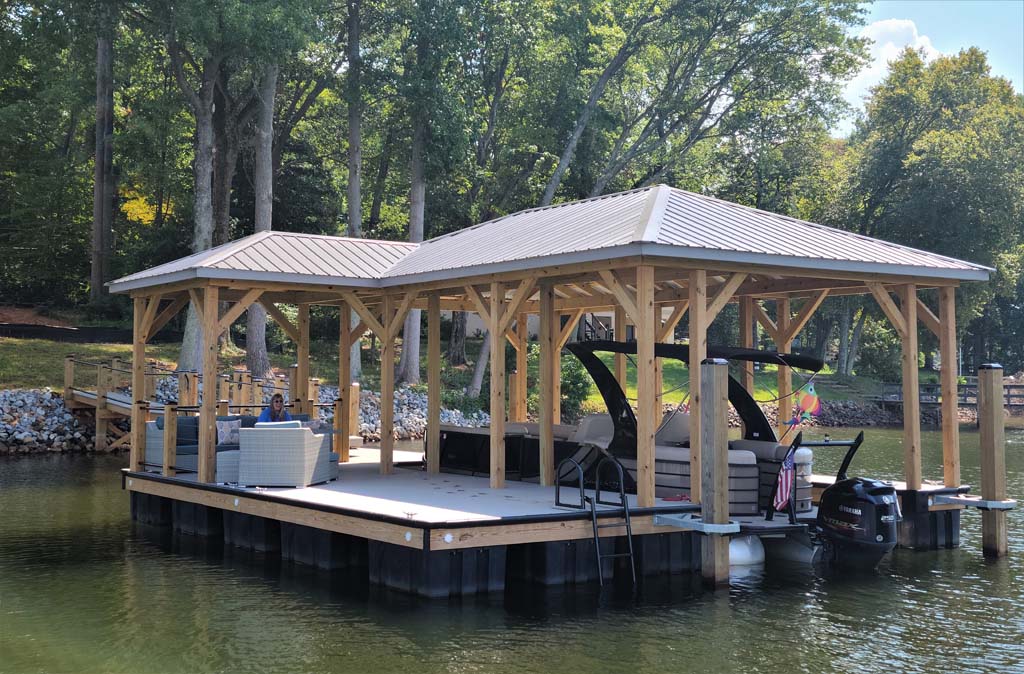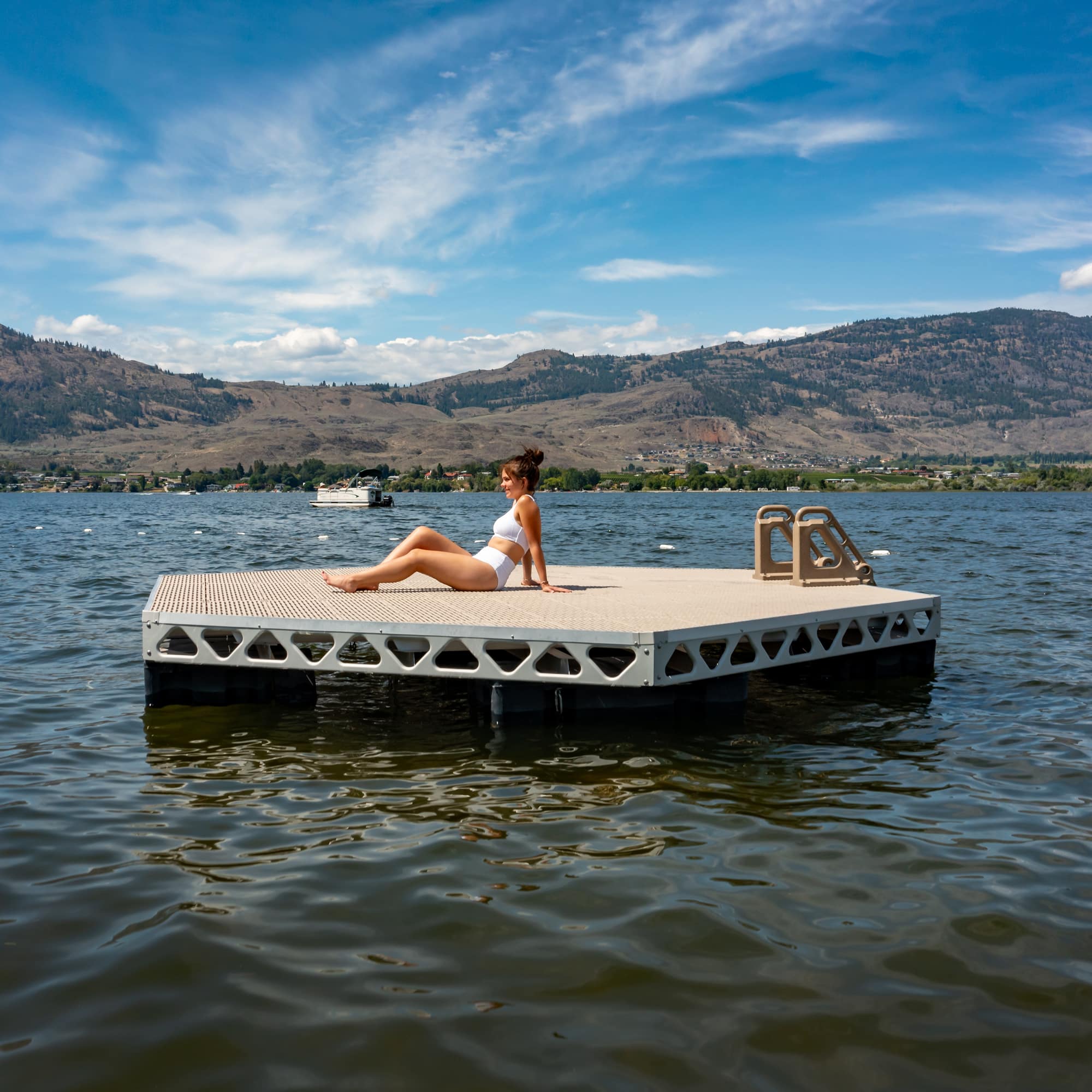Upgrade Your Waterside With Durable Floating Docks
Upgrading your waterfront with long lasting floating docks can significantly improve both performance and aesthetic appeals, giving a versatile solution for numerous water activities. With a variety of materials readily available, consisting of low-maintenance options and standard timber, picking the appropriate dock can complement your individual style and meet sensible demands.
Advantages of Floating Docks
Floating docks deal a plethora of benefits that enhance their charm for various maritime applications. Unlike standard set docks, floating docks increase and fall with the trend, making certain consistent ease of access for boats and boat no matter of ecological problems.
Additionally, floating docks are much easier to transfer and mount, providing versatility for seasonal or short-lived usage. Their modular design permits customization to fit details demands, whether for exclusive marinas, domestic watersides, or business applications.
Moreover, floating docks produce minimal disturbance to the aquatic setting, protecting local ecosystems and minimizing the chance of disintegration. They also supply improved safety and stability for individuals, as their resilient nature uses an extra flexible surface area than rigid structures.
Furthermore, floating docks can help with a varied series of tasks, such as fishing, swimming, and recreational boating, making them a useful asset for waterside growth. Their adaptability and functionality make floating docks a recommended choice for a range of naval jobs.
Picking the Right Materials
Picking appropriate products for floating docks is crucial to their durability, efficiency, and total performance. When choosing products, take into consideration aspects such as environmental exposure, maintenance demands, and architectural integrity. Usual products consist of timber, plastic, light weight aluminum, and composite alternatives, each offering unique advantages and disadvantages.
Wood, while visually pleasing, calls for routine maintenance to avoid rot and degeneration. Pressure-treated timber can improve longevity, yet it might still yield to water damage gradually. Plastic floats, usually made from high-density polyethylene, are resistant to rust and need minimal maintenance, making them an appealing option for low-maintenance applications.
Aluminum is one more practical alternative, understood for its toughness and lightweight homes. It is resistant to corrosion and can withstand severe climate condition, although it might be much more pricey than other materials. Composite materials incorporate the very best features of timber and plastic, offering a low-maintenance and resistant choice that simulates the look of timber without the associated drawbacks.
Eventually, the selection of product should straighten with the planned use, environmental factors to consider, and budget plan restrictions, making certain a practical and sturdy floating dock that fulfills your particular needs.
Installation Process Overview
The effective setup of a drifting dock relies upon cautious planning and execution, ensuring that it runs successfully in its intended setting. The primary step entails analyzing website conditions, consisting of water depth, coastline features, and prevailing weather condition patterns, which will notify the dock design and anchoring system.
Adhering to the website assessment, the next stage is to prepare the floating dock elements. This consists of constructing the structure, safeguarding drifts, and affixing any type of needed hardware. It is essential to guarantee that all links are robust and waterproof to endure aquatic problems.
As soon as the dock is assembled, the installment process starts with placing the dock in the water. This can involve a crane or various other training devices, particularly for bigger structures. Proper placement is crucial for functionality and security.

Maintenance Tips for Long Life
Routine upkeep is vital for ensuring the durability and ideal performance of a drifting dock. To accomplish this, start with routine assessments at the very least twice a year, focusing on the honesty of the dock's structure, consisting of the a fantastic read flotation tools and connecting hardware. Seek indications of wear, deterioration, or damages, and resolve any kind of problems quickly to stop more damage.
Cleaning is another critical facet of upkeep. Get rid of particles, algae, and barnacles from the dock's surface area to avoid slippery conditions and preserve visual allure. Utilize a light cleaning agent and a soft brush to stay clear of harming the dock's materials.
In addition, ensure that the dock is properly anchored and secured to withstand seasonal adjustments in water levels and weather condition conditions. Check the anchoring system for security and make changes as necessary.
Enhancing Your Outdoor Aesthetic
To develop a visually appealing exterior area, incorporating a drifting dock can substantially enhance the overall visual of your waterfront residential property. Floating docks are not only functional but can likewise work as a striking prime focus that matches the all-natural environments - floating docks. Offered in various products and designs, these docks can be customized to match your residential property's architectural design and landscape
The enhancement of decorative components, such as incorporated lighting or stylish barriers, additionally raises the dock's visual allure. Consider making use of all-natural wood finishes, which mix effortlessly with the setting, or deciding for contemporary materials like light weight aluminum or composite outdoor decking that offer a streamlined, modern look.
Purposefully putting planters or seating areas on or around the dock can develop welcoming rooms that urge relaxation and satisfaction of waterside views. In addition, including colors and appearances that balance with your landscape will create a cohesive aesthetic throughout your outdoor location.

Verdict

Updating your beachfront with resilient floating docks can substantially enhance both performance and looks, providing a flexible remedy for various water activities. Unlike traditional fixed docks, floating docks rise and visit site autumn with the trend, ensuring constant access for boats and watercraft no matter of ecological conditions.Choosing suitable check products for floating docks is vital to their durability, efficiency, and total performance.Once the dock is put together, the setup procedure starts with positioning the dock in the water.In summary, floating docks deal numerous advantages, including adaptability to water level modifications and a selection of product alternatives.